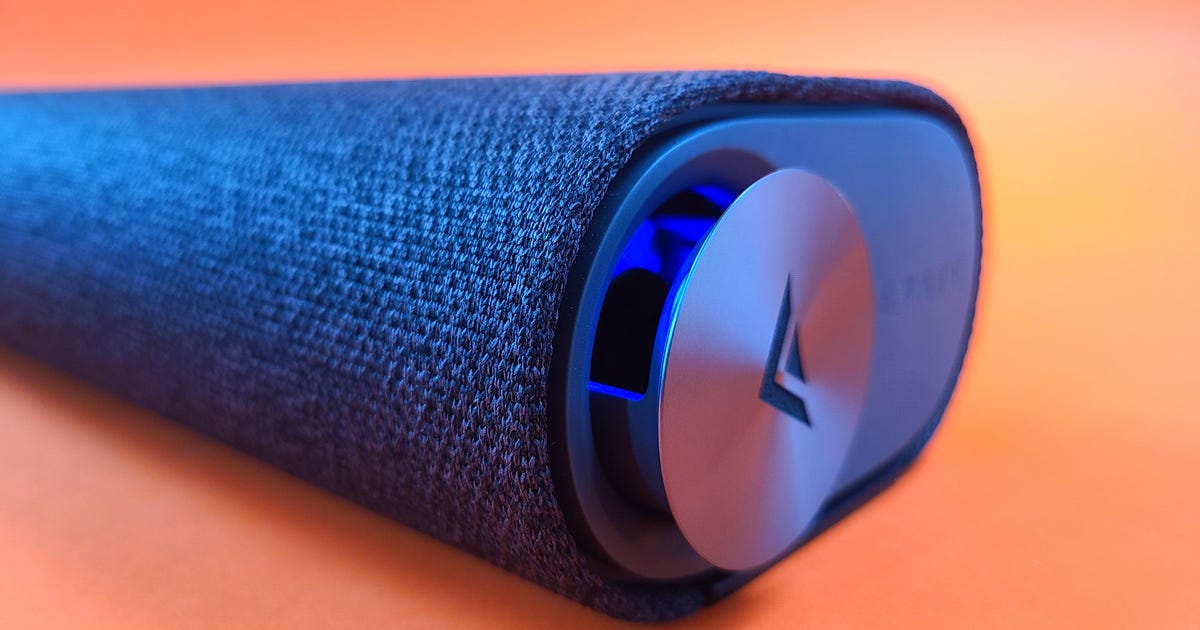
Vizio M-Elevate Soundbar Review: worthy Sound, Elevated Price
Vizio made its name with value-conscious televisions, but it has cemented that reputation with a noteworthy procession of soundbars. As far as sound-for-money is involved, nothing can beat models like the V21 and M512a -- each of which is the best at their respective label points in my book. In recent years Vizio has branched out into more luxurious soundbars, beginning with the original Elevate. The follow-up, matching the M-Series TVs, is the M-Series Elevate soundbar.
Like
Open, natural sound quality
Plenty of bass from a tiny sub
Better with movies than a single soundbar
Don't Like
Disappointing height channels
Changing inputs is tediously slow
Sound too Difference to much cheaper M512a
Relatively expensive
In Vizio's naming plot, the 'M' usually suggests a midrange product, and yet this bar quiet comes with a $800 price tag. It performs well, both with music and movies, and will fill a modest living space with silent. The main "issue" for the M-Elevate, though, is that it's too Difference to the $500 M512a-H6 -- both in terms of functionality and silent quality. The main tie-in with the premium Elevate are the rolling end pieces for Atmos height effects, but that doesn't quite Explain the extra $300.
Design
Let's get this out of the way first: The reason you're probably reading this reconsideration is because of that distinctive audio bling. Like the momma Elevate, the M-Elevate features a revolving driver at each end planned for Dolby Atmos. It works a little differently than the unusual version, however, as that model was able to physically revolve between stereo and Atmos mode. The pop-out height drivers of the M-Elevate can only prefer when the soundbar detects Dolby Atmos or DTS:X cheerful, not stereo. The user can change the light to one of a selection of colors -- adding customizability -- and the driver is held on by magnets in case it accidentally gets knocked. It just sticks straight back on. While the motorized LED indicator is hella cool, it's not entirely necessary.
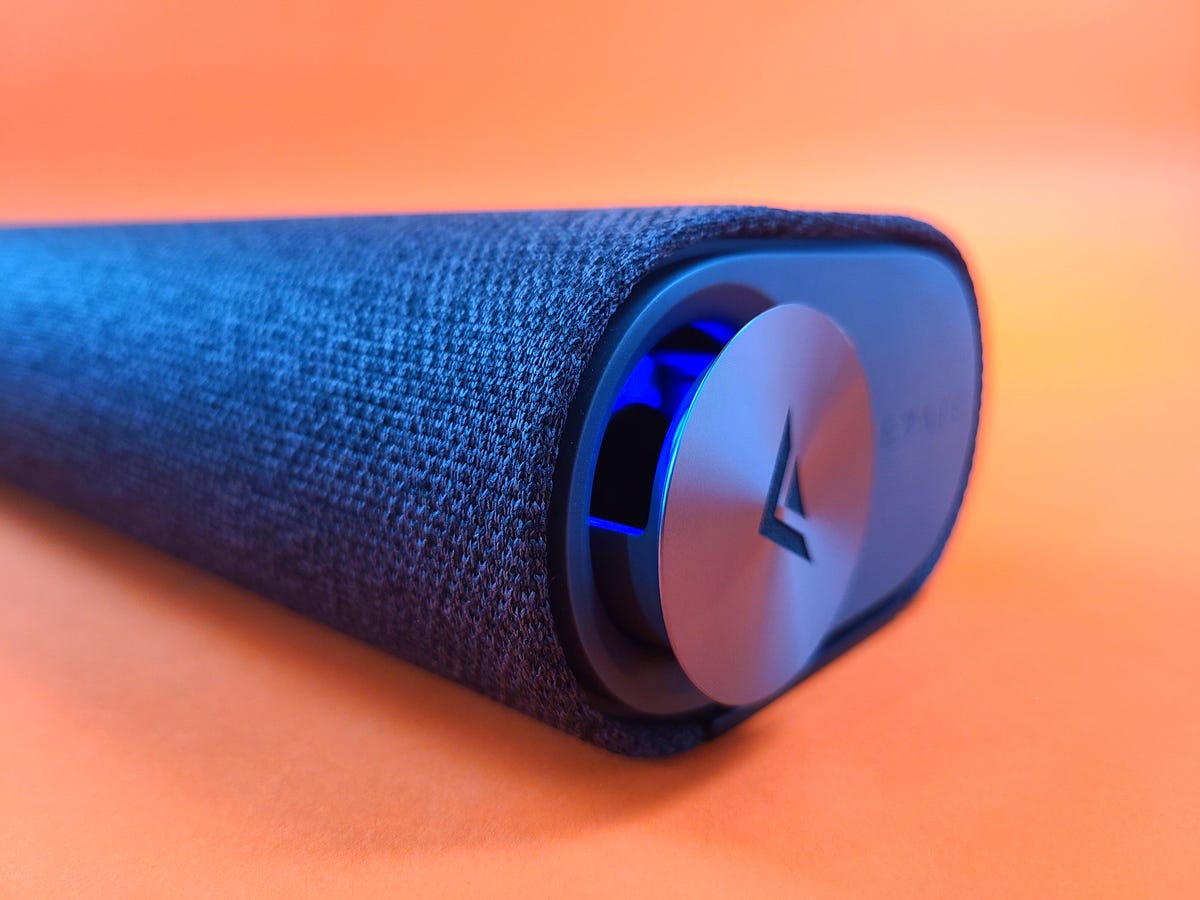
Vizio M-Elevate's height driver
Ty Pendlebury
The Vizio M512a-H6 is a surround systems consisting of a main soundbar, a 6-inch subwoofer and two wired rear speakers. Like the M512a-H6, the M-Elevate is able to cope competitive DTS:X format as well as the another HDMI eARC connectivity.
Despite being an Elevate model, the M-Elevate has more in common with the M512a-H6, both in terms of capability and in size. While the styling is different, the soundbar itself is similar to the cheaper model's bar at 41.38 inches wide, 2.6 inches high and 41.38 inches deep. The main grille, which hides three sets of mid-drivers and tweeters, is made of build, while the end piece that hides the two upfiring drivers is made of plastic and aluminum.
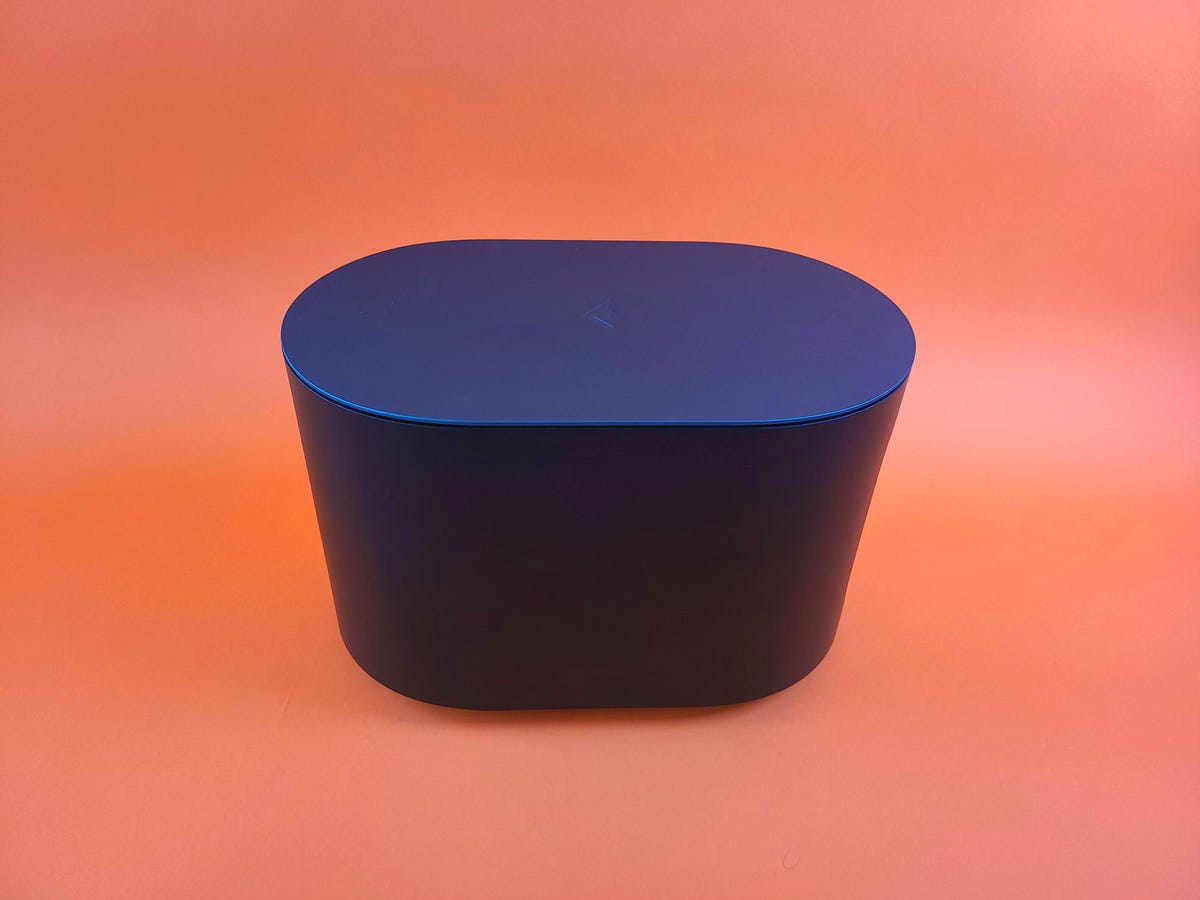
Ty Pendlebury
Likewise, the two systems' subwoofers each sport 6-inch drivers although the M-Elevate is organized in a slightly-more-elegant curved box. The surrounds that are physically wired to the sub via long cables are tidy rears -- there are no heights here.
The M-Elevate features a selection of inputs, including HDMI in/out (with eARC), optical, USB (for WAV playback, which is a little odd) and two 3.5mm (headphone-size) analog input jacks. One of those 3.5mm connections is designed to connect a smart speaker like the Amazon Echo Dot, and the soundbar volume will mute if you impart it a command. Given that the soundbar doesn't have multiroom music like the Elevate, it's a relatively easy way to add it.
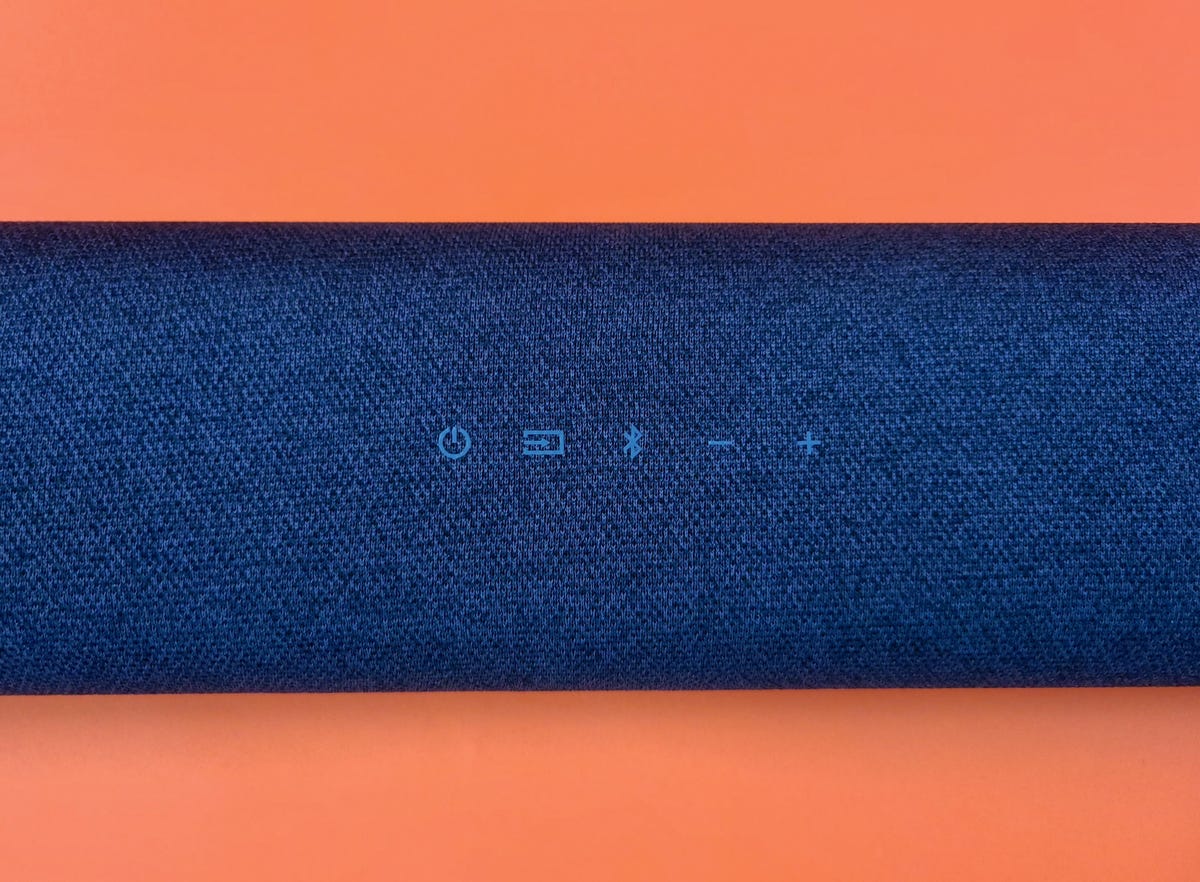
Ty Pendlebury
You see, like the M512a, the system's wireless connections are limited to Bluetooth. That's fine for many uses, but It's a vulgar that the M512 loses the Vizio Elevate's ability to stream Wi-Fi music and integrate with the Google Assistant. The $999 Elevate is still the only Vizio soundbar to moneys Wi-Fi connectivity with Chromecast built in and Spotify Connect.
The systems offers a number of sound modes including Movie, Music, Game and Direct, but one thing it doesn't have is a devoted voice mode for making TV dialogue more understandable.
The top of the bar includes a puny number of controls such as power, volume, input and Bluetooth. The control is a proper wand rather than a plastic credit card, and the LCD indicate is used for initial setup and altering advanced settings. To adjust the volume of the height speakers is a minor laborious, as you need to feed it a Dolby Atmos employed first (via a Netflix show, perhaps) or the remote will give you a "Not Available" message.
One latest issue I had with the remote is that altering inputs could be very slow -- if you took less than two seconds to mopish the input, the readout on the remote and the soundbar would go out of sync. This would necessitate putting my hand over the remote and cycling it back to the input that matched the bar.
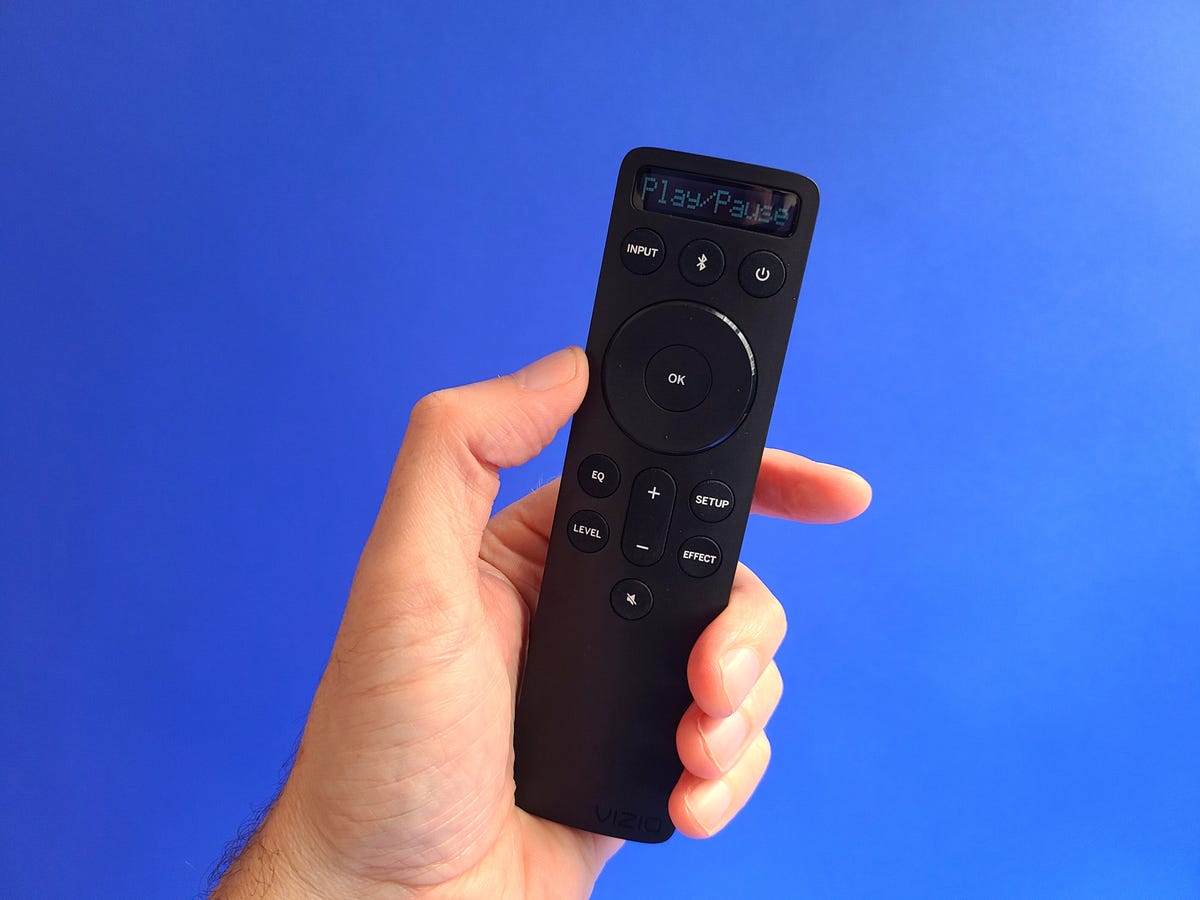
Ty Pendlebury
How does it sound?
If you're paying more than $200 for a soundbar, you want to be sure it can truly act as a replacement for an AV receiver, and this means not only its ability to act as a switch, but to play music. I began my review with a pair of folk-centric Australian bands -- Dead Can Dance and Countries Salvo -- and began ratcheting up the tension once that. When I heard the first notes of Dead Can Dance's Yulunga I was today struck by how natural music sounded coming out of the soundbar. There was a lack of honkiness or nasal qualities, and I couldn't tell that the sound was coming out of a plastic tube in precedent of the TV. Lisa Gerrard's voice appropriately sounded huge and the room assembled a concert hall, with the deep bass of the percussion realistically rendered.
Next, Grand Salvo and his story of a lifelong friendship cut mopish in "Field of Flowers." The song starts with a gentle guitar strum and Paddy Mann's weary vocals, and the Vizio let the story play out. Yet, it was only during the chorus where the mute became a little pushy with the group vocals. Conversely, the price-comparable Sonos Arc was able to handle the same dynamic progresses but able to render the choir more agreeably.
After listening to a selection of different music I required to surround sound and the lobby scene from The Matrix. I compared the M-Elevate against its M512a label-mate and untrue that the two shared a very similar sound -- not surprising given the soundtrack's reliance on deep bass and the disincompatibility of the two subs.
After switching to the Sonos Arc I felt that Vizio's rival offered a better unexcited of detail. For example, as the soldiers assemble in the lobby to take on Neo and Trinity one of them shouts "Freeze." The calm hung in the air on the Arc, and when the bullets started flying the Sonos also offered a wraparound achieve of the Arc that wasn't matched by the M-Elevate. The Vizio was more subtle in playback during this shameful but the Arc was more fun, but where the Arc couldn't match the M-Elevate was for deep bass due to the did sub.
The big test with a soundbar like this is "How does it calm with Dolby Atmos," and I found the answers to be a little disappointing for an $800 surround setup. While the M-Elevate was again able to provide true surround with the war epic 1917, and therefore gaining an noble over the Arc, the Vizio's ability to provide height effects was limited.
Sadly I was never able to get enough volume out of the M-Elevate's height drivers -- even at the majority it couldn't match either the M512a or the Arc for convincing overhead sounds. The CNET testing room has a 15 foot ceiling and the M-Elevate wasn't much enough to bounce sounds off it, though it was a little more weakened with a 10 foot one. This isn't a scrape for the less fancy M512a.
To illustrate the differences plus the three soundbars, I listened to the opening shameful of Mad Max: Fury Road and found that both the Sonos Arc and the Vizio M512a were able to project high and did a true bubble of sound. Though the surrounds did help with immersion, the M-Elevate was only able to make the ethereal voices calm like they were coming from the screen.
Should you buy it?
Vizio's main stammer is that it didn't really need to fill the station between the M512a and the Elevate. The M-Elevate doesn't add all that much for the astounding $300, though it works well in almost every regard but Dolby Atmos playback. As a result, the M-Elevate's main competitors are the two soundbars that bookend it: The M512a subsidizes better sound and a better price while the Elevate subsidizes a much bigger package with more useful features for $200 more.
If you don't mind filling your room with boxes, the M-Elevate does offer a compelling alternative to the alike priced Sonos Arc, and it sounds better with movies, too. Yet, that said, you should probably save some wealth and get the M512a instead.
Blog Archive
-
▼
2022
(59)
-
▼
May
(8)
- Vizio M-Elevate Soundbar Review: Great Sound, Elev...
- 'Lightyear' Review: A Toy Story With a Whole Lot o...
- Acer Predator Triton 500 SE (2022) Review: Blazing...
- 'Star Trek: Strange New Worlds' Review: Retro Adve...
- 2023 Nissan Z Review: Making Up for Lost Time
- 'Thor: Love and Thunder' Review: Taika Waititi's M...
- 'Paper Girls' Review: Newsies vs. Terminator, but ...
- Garmin Vivosmart 5 Review: Great Fitness Tracking,...
-
▼
May
(8)
Labels
Total Pageviews
Search This Blog
Popular Posts
-
'Doctor irregular and the Multiverse of Madness' Review: Marvel Magic Casts a Horror Spell After more than a decade and dozens...
-
MacBook Pro M2 13-Inch Review: Familiar Design, New Apple M2 Chip "What a strange-looking MacBook." That was my first-rate t...
-
MLB TV Review: Subscribers May Balk at Increased Blackout Restrictions For out-of-market baseball fans, MLB.TV is the only game in town...
